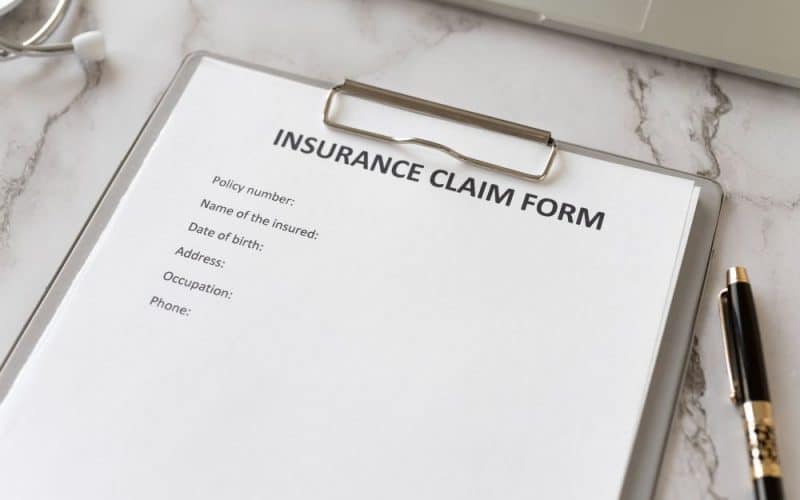Claims made and occurrence insurance policies differ both in coverage and cost. The key difference between the two is in the mechanism the policy uses for activating coverage, that is, what needs to occur, and when, in order for a claim to be considered for coverage.
Insurance buyers need to be aware that the mechanism for activating coverage behind an occurrence policy is completely different from that of a claims made policy. Without understanding how each type of policy works, insureds may be left without insurance coverage at the time of a loss.
It is also imperative for brokers that they can explain the coverage implications of each type of policy and for the insured to know what type of coverage they have in place.
Understanding claims made policies
A claims made policy refers to an insurance policy that provides coverage when a claim is made against it, regardless of when the claim event occurred. This is a popular option for when there is a delay between when events occur and when claimants file claims. However, the policy only covers claims made while the policy is active.
Businesses often carry claims-made policies or occurrence policies, which extend coverage for claims made on inactive policies if claim events occurred when the policies were active.
For example, these policies are often used to cover the potential for mistakes associated with errors and omissions (E&O) in financial statements. They are also used to cover businesses from claims made by employees, including wrongful termination, sexual harassment, and discrimination claims.
Claimants may make claims against a policy months after the event of the claims takes place. This type of liability is referred to as employment practices liability and may also cover the actions of directors and officers of the business.
Insurance companies may also offer claims-made and reported policies, which most find less desirable than a standard claims-made policy because claims must be reported during the policy period to be covered. This reduces the amount of time that a business can expect to be covered, which can be a problem in situations where many months pass between the claim event and the claim filing.
What is an occurrence-based policy?
With an occurrence-based policy, you’ll be protected if the loss happened during your policy timeframe. As long as you were insured when the incident occurred, you can file a claim with your insurer. Occurrence coverage typically accommodates “long-tail” events – situations that don’t produce lawsuits or claims right away.
General liability insurance, commercial auto insurance, and umbrella liability insurance are the most common examples of occurrence-based policies, as they typically are needed for longer protection.
For instance, if you get into a work-related car accident while your policy was active, but don’t notice one of the effects of the accident until years later, you could still file a claim against your insurance even after your policy expired.
Key provisions that differentiate a claims made policy from an occurrence policy
Every insurance policy comes with rights and obligations for both the insured and the insurance company. There are some key provisions in a claims-made policy that you will not find in an occurrence policy, and they deserve extra attention.
These provisions are part of the mechanism that makes claims-made policies work for the insured and for the insurance company.
Warranties
Claims made policies may contain a warranty statement in the application questionnaire or in the policy itself. Give warranties the attention they deserve. A warranty may read like this:
“no person or entity proposed for coverage is aware of any act, error or omission which might result in a claim”,
The applicant is given the option to answer ‘Yes’ or ‘No’. Omitting facts or information can result in coverage disputes or a claim denial. The insurance company may even rescind the policy. It is wise to work with counsel and your insurance broker to disclose any incidents or report any potential claims.
Retroactive Date
If your claims made policy has a retroactive date, you have a cut-off date after which acts are covered. Any acts that occurred before the retroactive date will not be covered. Check the retroactive date on your declarations page at policy renewal and, particularly, when replacing coverage. Avoid resetting the retroactive date as a reset date essentially removes coverage for any past acts.
Some insurance companies provide “full prior acts coverage”. This means there is no retroactive date and coverage is available for all past acts as long as the policy is active.
Claims reporting requirements
Claims made policies have strict requirements concerning when a claim should be reported to the insurance company. There is also the difference between claims-made policies and claims made and reported policies. Claims-made and reported policies require that both the claim and the reporting of the claim (by the insured to the insurer) occur during the policy period.
This type of policy reporting requirements will vary depending on the insurer. Nevertheless, the expectation is typically for the insured to report the claim “as soon as practicable”. Alternatively, the policy may give a specific window of time in which the insured can report the claim after it has been made.
Extended reporting period
Tail exposure is always something to keep in mind when purchasing a claims made policy. This doesn’t mean an insured has to purchase a policy perpetually. The insurance market offers a solution for tail exposure called an extended reporting period or “ERP”. ERP covers that tail exposure by granting a set amount of time after the policy has ended, in which to report claims.
ERPs are commonly purchased for anywhere from 1 to 6 years.
Note, though, that an ERP is not the same as a policy renewal. An ERP does not cover any wrongful acts that occur after the ERP is executed. Coverage applies only to claims that are made for acts that occurred during the policy period prior to the ERP.
Reporting potential claims
What should an organization do if it becomes aware of a potential claim but the claim is yet to be received? Some policies specifically state that they will accept a detailed written notification of an anticipated claim as a reported claim. However, the notification must provide sufficient information. A potential claim notification must include specifics such as:
- the names of the expected claimant and the insured defendant,
- the date and description of the wrongful act(s), and
- the reason for anticipating a claim.
In these situations, seek advice from your insurance broker and work with legal counsel to prepare the written notification for the insurer.
Claims-made and occurrence policy limits
When you purchase a policy, you have to decide how much protection you need with your aggregate limit. This refers to how much coverage you have available for all future claims. Per-occurrence limit is the most your insurance company will pay for a given incident.
With occurrence policies, your aggregate limit resets every year. For example, let’s say you purchased a $1 million occurrence-based general liability policy. In year one, you get sued for $1 million. When your policy renews at the beginning of year two, you’ll have another $1 million of coverage to protect you.
In short, occurrence-based policies provide ample coverage as long as you keep renewing them. For this privilege, you’ll generally pay more than you would for claims-made policies.
With claims-made policies, the amount of coverage you purchase must last for as long as you keep your policy. For example, if you had a $1 million claims-made policy and a client sued you for $1 million in the first year, you would have no further protection in your policy. Unless you increase your policy limit in the second year, you will be uninsured.
Which is better in claims made and occurrence policies?
With occurrence vs. claims-made, is one policy type better than the other? It depends on your business needs.
- Occurrence-based policies are simpler to own. When you switch insurers, you’ll still have the ability to file claims on your prior work, unlike with claims-made policies.
- Claims-made policies have lower initial premiums. But this can also pose problems when you cancel them or switch to an occurrence-based policy.
- Occurrence-based policies also offer more peace of mind. As you get a new aggregate limit each time you renew your policy, you won’t have to worry about a large claim exhausting your limit.
- Risk of exhausting your claims-made policy limit. If you have several large claims under your current policy, you could reach your coverage limit in a short amount of time.
- Depends on what you and your business need. If you’re just starting out, you may want a lower-cost claims-made policy. And if you don’t plan to cancel your policy, this may be perfect. However, for a larger firm with more disposable cash and more assets at risk than a new firm, an occurrence-based policy may be more appropriate, even though it costs more.
When you’re shopping for small business insurance, always ask your agent which types of insurance are occurrence-based or claims-made.
How to choose between an occurrence and a claims made policy
General liability policies are commonly occurrence-based policies while management liability policies tend to be written on a claims-made basis. Certain policies like Media Liability can be either claims-made or occurrence, depending on the insurer. Keep in mind that occurrence vs. claims made concerning liability policies. First-party losses use different language, for example, loss “discovered” or loss “sustained”.
Directors & Officers Liability, Employment Practices Liability, and Miscellaneous Professional Liability insurance are examples of policies that are offered on a claims-made basis because of the long tail exposure. Insurance companies specifically design the policies this way so they can underwrite and be compensated for taking on the risk.
Claims-made and occurrence: In conclusion
A claim made while the policy is in force triggers coverage for a claims-made policy. The insurance company is obligated to defend the policyholder and pay for the claims. The insurance policy will include a specified period in which coverage applies, and any claims made during that time are covered under the policy.
This type of trigger is different from an occurrence policy, which is based on the time in which the claim event occurred since the occurrence policy trigger only covers claims that come from incidents that fell during a specified period.
Occurrence policies don’t specify when the accident must take place, as long as the injury or damage it causes occurs during the policy period.
Recommended Articles
- GROUP ACCIDENT INSURANCE: Coverage, Types & Cost
- Travelers Insurance Claims: Understanding The Claims Process
- AAA Insurance Claims: Step By Step Process
- Effective Tips & Scripts for Insurance Cold Calling
- Why Do Insurance Claims Take Long To Settle? All To Know
- DJ Insurance: Coverage, Cost & Top Providers






